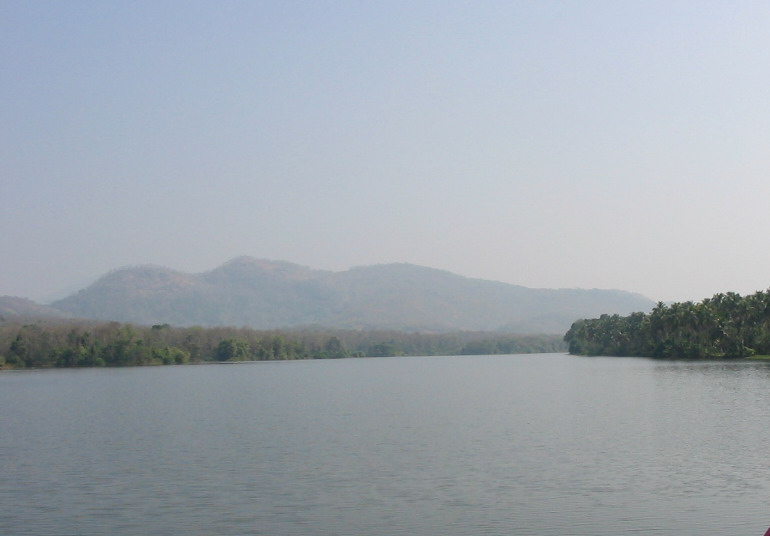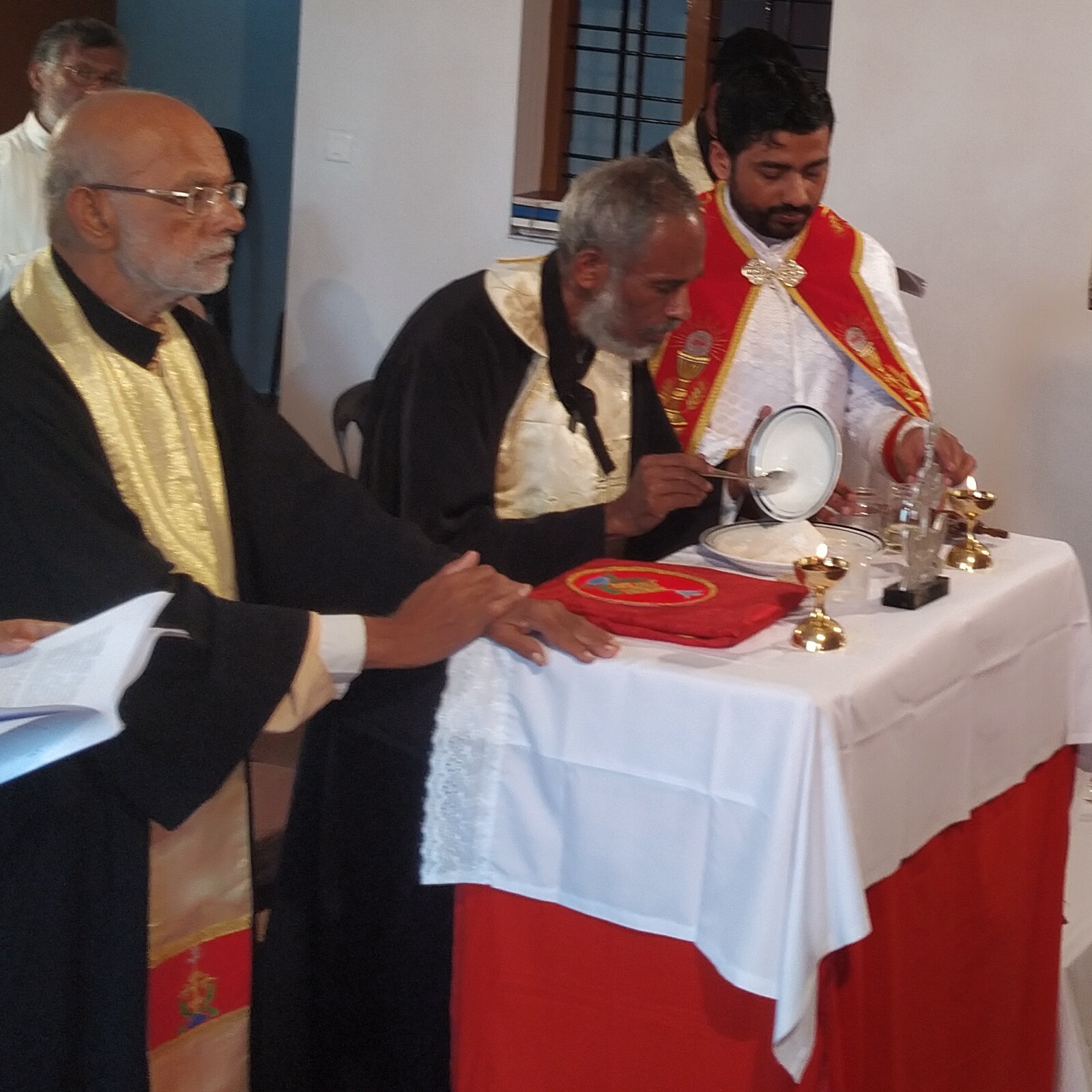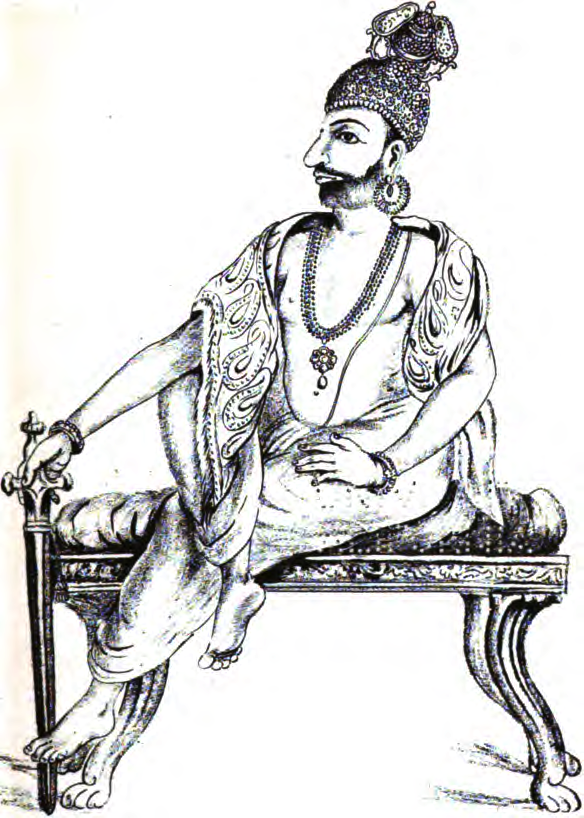|
Neriamangalam
Neriamangalam is a village in Ernakulam district in the Indian state of Kerala. Neriamangalam is on the banks of Periyar River. It is on the border of Ernakulam and Idukki districts. Agriculture is the predominant occupation in this area. The Neriamangalam Bridge, Ranikallu (stone of queen) etc. are of historical importance. The Neriamangalam Bridge, built across the Periyar river, is often referred as 'The Gateway to the Highranges' as it is on the way to the higher regions of Idukki district, especially Munnar. The bridge was made by the Maharaja of Travancore in 1935. Now the bridge is a part of National Highway 85 which leads to Dhanushkodi in Tamil Nadu. The St Joseph's church, Neriamangalam is a major place of worship for Syro-Malabar Christians of this region. The Jawahar Navodaya Vidyalaya, Neriamangalam is an important educational institution in this region. Neriamangalam gets one of the highest average rainfall in the state of Kerala. So this place is aptly hailed a ... [...More Info...] [...Related Items...] OR: [Wikipedia] [Google] [Baidu] |
Periyar River
Periyar, , (meaning: ''big river'') is the longest river and the river with the largest discharge potential in the Indian state of Kerala. It is one of the few perennial rivers in the region and provides drinking water for several major towns. The Periyar is of utmost significance to the economy of Kerala. It generates a significant proportion of Kerala's electrical power via the Idukki Dam and flows along a region of industrial and commercial activity. The river also provides water for irrigation and domestic use throughout its course besides supporting a rich fishery. Due to these reasons, the river has been named the "Lifeline of Kerala". Kochi city, in the vicinity of the river mouth draws its water supply from Aluva, an upstream site sufficiently free of seawater intrusion. Twenty five percent of Kerala's industries are along the banks of river Periyar. These are mostly crowded within a stretch of in the Eloor-Edayar region (Udhyogamandal), about north of Kochi harbor. ... [...More Info...] [...Related Items...] OR: [Wikipedia] [Google] [Baidu] |
National Highway 85 (India)
National Highway 85 (or NH 85) is a National Highway in southern India. It links Kochi in Kerala with Thondi, Tamil Nadu. Route Starting from NH66 intersection in Kundanoor Junction at Maradu, Kochi, Ernakulam, Kolenchery, Muvattupuzha, Kothamangalam, Neriamangalam, Adimali, Munnar, Devikulam, Poopara in Kerala. -> Bodi, Theni, Andippatti, Usilampatti, Madurai, Thiruppuvanam, Sivagangai, Kalayarkoil, and ending at Thondi at NH32 intersection in Tamil Nadu. See also * List of National Highways in India (by Highway Number) * National Highways Development Project The National Highways Development Project (NHDP) is a project to upgrade, rehabilitate and widen major highways in India to a higher standard. The project was started in 1998 under the leadership of Prime Minister, Atal Bihari Vajpayee. Natio ... References External linksNH 85 on MapsofIndia.com National highways in India National Highways in Tamil Nadu National Highways in Kerala Roads in Ernaku ... [...More Info...] [...Related Items...] OR: [Wikipedia] [Google] [Baidu] |
States And Territories Of India
India is a federal union comprising 28 states and 8 union territories, with a total of 36 entities. The states and union territories are further subdivided into districts and smaller administrative divisions. History Pre-independence The Indian subcontinent has been ruled by many different ethnic groups throughout its history, each instituting their own policies of administrative division in the region. The British Raj mostly retained the administrative structure of the preceding Mughal Empire. India was divided into provinces (also called Presidencies), directly governed by the British, and princely states, which were nominally controlled by a local prince or raja loyal to the British Empire, which held ''de facto'' sovereignty ( suzerainty) over the princely states. 1947–1950 Between 1947 and 1950 the territories of the princely states were politically integrated into the Indian union. Most were merged into existing provinces; others were organised into ... [...More Info...] [...Related Items...] OR: [Wikipedia] [Google] [Baidu] |
India
India, officially the Republic of India (Hindi: ), is a country in South Asia. It is the seventh-largest country by area, the second-most populous country, and the most populous democracy in the world. Bounded by the Indian Ocean on the south, the Arabian Sea on the southwest, and the Bay of Bengal on the southeast, it shares land borders with Pakistan to the west; China, Nepal, and Bhutan to the north; and Bangladesh and Myanmar to the east. In the Indian Ocean, India is in the vicinity of Sri Lanka and the Maldives; its Andaman and Nicobar Islands share a maritime border with Thailand, Myanmar, and Indonesia. Modern humans arrived on the Indian subcontinent from Africa no later than 55,000 years ago., "Y-Chromosome and Mt-DNA data support the colonization of South Asia by modern humans originating in Africa. ... Coalescence dates for most non-European populations average to between 73–55 ka.", "Modern human beings—''Homo sapiens''—originated in Africa. Then, int ... [...More Info...] [...Related Items...] OR: [Wikipedia] [Google] [Baidu] |
Cherrapunjee
Cherrapunji () or Sohra is a subdivisional town (Proposed District) East Khasi Hills district in the Indian state of Meghalaya. It is the traditional capital of ka ''hima'' Sohra (Khasi tribal kingdom). Sohra has often been credited as being the wettest place on Earth, but for now nearby Mawsynram currently holds that distinction. It still holds the all-time record for the most rainfall in a calendar month and in a year, however: it received in July 1861 and between 1 August 1860 and 31 July 1861. History The history of the Khasi people – native inhabitants of Sohra– may be traced from the early part of the 16th century. Between the 16th and 18th centuries, these people were ruled by their tribal 'Syiems (rajas or chiefs) of Khyriem' in the Khasi Hills. The Khasi hills came under British authority in 1833 with the submission of the last of the important Syiem, Tirot Sing Syiem. The main pivot on which the entire superstructure of Khasi society rests is the matrilineal ... [...More Info...] [...Related Items...] OR: [Wikipedia] [Google] [Baidu] |
Jawahar Navodaya Vidyalaya
Jawahar Navodaya Vidyalayas (JNVs) is a system of central schools for talented students predominantly from rural areas in India. They are run by Navodaya Vidyalaya Samiti, Noida, an autonomous organization under the Department of School Education and Literacy, Ministry of Education (MoE), Government of India. JNVs are fully residential and co-educational schools affiliated to Central Board of Secondary Education (CBSE), New Delhi, with classes from VI to XII standard. JNVs are specifically tasked with finding talented children in rural areas of India through JNVST (JNV Selection Test) and providing them with an education equivalent to the best residential school system, without regard to their families' socio-economic condition. The Budget for Education, Boarding and activities at JNVs are provided by the Ministry of Education, Government of India and it's free of cost for the students during the 7 years of stay. JNVs exist all over India, with the exception of Tamil Nadu. A ... [...More Info...] [...Related Items...] OR: [Wikipedia] [Google] [Baidu] |
Syro-Malabar Catholic Church
lat, Ecclesia Syrorum-Malabarensium mal, മലബാറിലെ സുറിയാനി സഭ , native_name_lang=, image = St. Thomas' Cross (Chennai, St. Thomas Mount).jpg , caption = The Mar Thoma Nasrani Sliva or Saint Thomas christian cross, the symbol of the Syro-Malabar Church. , abbreviation=SMC, type = Catholic particular churches and liturgical rites, Self-governing church (''sui iuris'') , main_classification = Eastern Catholic , orientation = Eastern Christianity(Syriac Christianity) , scripture = , polity = Episcopal polity , governance=Holy Episcopal Synod of the Syro-Malabar Church, theology = East Syriac theology , leader_title = Pope , leader_name = Pope Francis, Francis , leader_title1 = Major Archbishop , leader_name1 = George Alencherry , leader_title3 = Administration , leader_name3 = Major Archiepiscopal Curia , ... [...More Info...] [...Related Items...] OR: [Wikipedia] [Google] [Baidu] |
Tamil Nadu
Tamil Nadu (; , TN) is a States and union territories of India, state in southern India. It is the List of states and union territories of India by area, tenth largest Indian state by area and the List of states and union territories of India by population, sixth largest by population. Its capital and largest city is Chennai. Tamil Nadu is the home of the Tamil people, whose Tamil language—one of the longest surviving Classical languages of India, classical languages in the world—is widely spoken in the state and serves as its official language. The state lies in the southernmost part of the Indian peninsula, and is bordered by the Indian union territory of Puducherry (union territory), Puducherry and the states of Kerala, Karnataka, and Andhra Pradesh, as well as an international maritime border with Sri Lanka. It is bounded by the Western Ghats in the west, the Eastern Ghats in the north, the Bay of Bengal in the east, the Gulf of Mannar and Palk Strait to the south-eas ... [...More Info...] [...Related Items...] OR: [Wikipedia] [Google] [Baidu] |
Maharajah Of Travancore
The Maharaja of Travancore was the principal title of the ruler of the Travancore, Kingdom of Travancore in the southern part of Kerala, India. The Maharaja of Travancore was the topmost ruler of Travancore until 1949, when Travancore was annexed into India. Since then, the Maharaja of Travancore remains as a titular position. Maharajas of the Kingdom of Travancore Titular Maharaja After British India became independent as two dominions in 1947, Chithira Thirunal agreed to accede his state to the new Dominion of India. Travancore was united with the neighbouring Cochin state and Chithira Thirunal served as Rajpramukh of the Travancore-Cochin Union from 1 July 1949 to 31 October 1956, which was the entire duration of the existence of that political entity. On 1 November 1956, the state of Kerala was created by uniting the Malayalam-speaking areas of the Travancore-Cochin Union with those of neighbouring Madras State, and Sree Chithira Thirunal's office of Rajpramukh came to an ... [...More Info...] [...Related Items...] OR: [Wikipedia] [Google] [Baidu] |
Munnar
Munnar () is a town and hill station in the Idukki district of the southwestern Indian state of Kerala. Munnar is situated at around above mean sea level, in the Western Ghats mountain range. Munnar is also called the "Kashmir of South India" and is a popular honeymoon destination. Etymology The name Munnar is believed to mean "three rivers", referring to its location at the confluence of the Mudhirapuzha, Nallathanni and Kundali rivers. History The region has been inhabited by hunter-gatherer tribals like the Malayarayan and Muthuvan for thousands of years. Tradition states that Colonel Arthur Wellesley, later the Duke of Wellington, was the first British person to pass through Munnar during Tippu Sultan's campaign in Travancore, but this is unsubstantiated. The first survey of the terrain was undertaken by Benjamin Swayne Ward in 1816–1817, who followed the Periyar into the Western Ghats and established a camp at the confluence of three rivers, from which the name ... [...More Info...] [...Related Items...] OR: [Wikipedia] [Google] [Baidu] |
Vidhan Sabha
The State Legislative Assembly, or Vidhan Sabha, or also Saasana Sabha, is a legislative body in the states and union territories of India. In the 28 states and 3 union territories with a unicameral state legislature, it is the sole legislative body and in 6 states it is the lower house of their bicameral state legislatures with the upper house being State Legislative Council. 5 union territories are governed directly by the Union Government of India and have no legislative body. Each Member of the Legislative Assembly (MLA) is directly elected to serve 5-year terms by single-member constituencies. The Constitution of India states that a State Legislative Assembly must have no less than 60 and no more than 500 members however an exception may be granted via an Act of Parliament as is the case in the states of Goa, Sikkim, Mizoram and the union territory of Puducherry which have fewer than 60 members. A State Legislative Assembly may be dissolved in a state of emergency, b ... [...More Info...] [...Related Items...] OR: [Wikipedia] [Google] [Baidu] |





